Effective Use of Harvested Trees (Ikurinzai – Timber from Cultivated Forests)
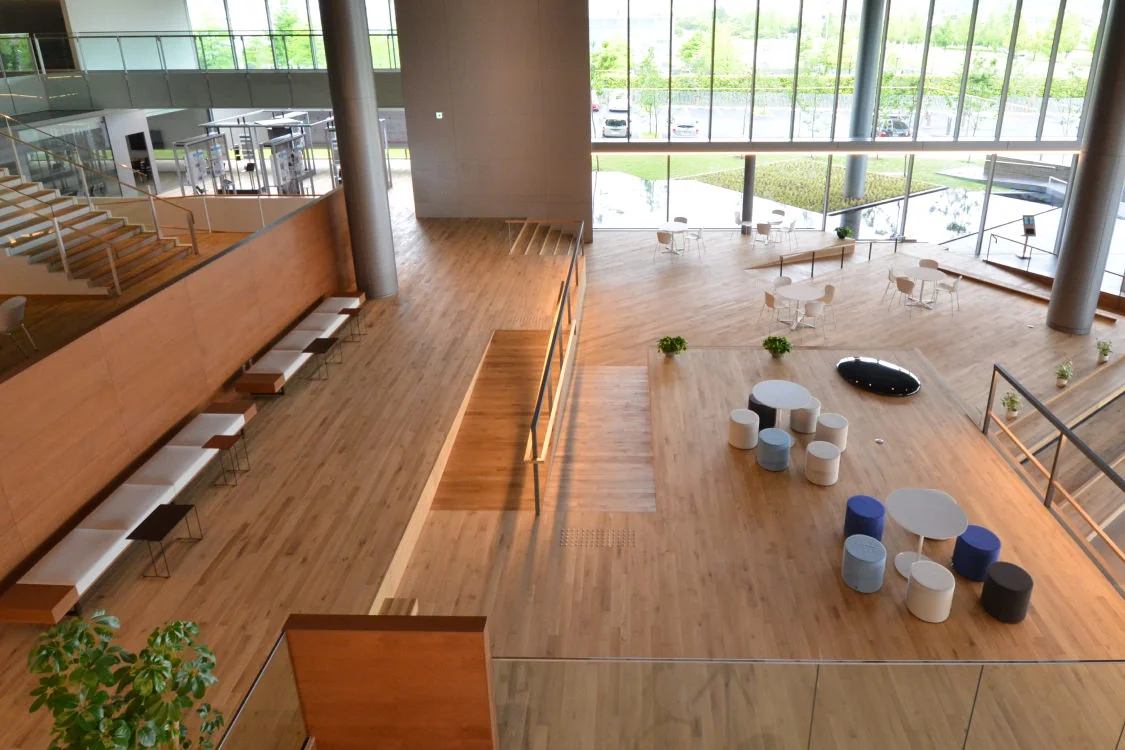
Ikurinzai - Timber from Cultivated Forests Project
In Order to Promote Healthy Forests, It Is Sometimes Necessary to Cut Down Trees
When people think about forest cultivation, most imagine planting trees. However, in order to further enhance health and abundance in Japan's forests, cutting trees is also very important.
For example, abandoned plantation forests densely packed with cedar and cypress, or neglected rural satoyama forests that were once maintained for firewood and charcoal, can become so overgrown that no sunlight reaches the forest floor.
To allow light into such forests and create an environment full of diverse trees and plants, a careful vegetation survey must be conducted to select which trees should be kept and which should be cut. In some cases, preventative logging is carried out to halt the spread of tree disease. Trees also need to be felled when constructing logging roads for forest management.
Reflecting our hope to make full use of those trees that need to be removed, we call these trees Ikurinzai – timber from cultivated forests.
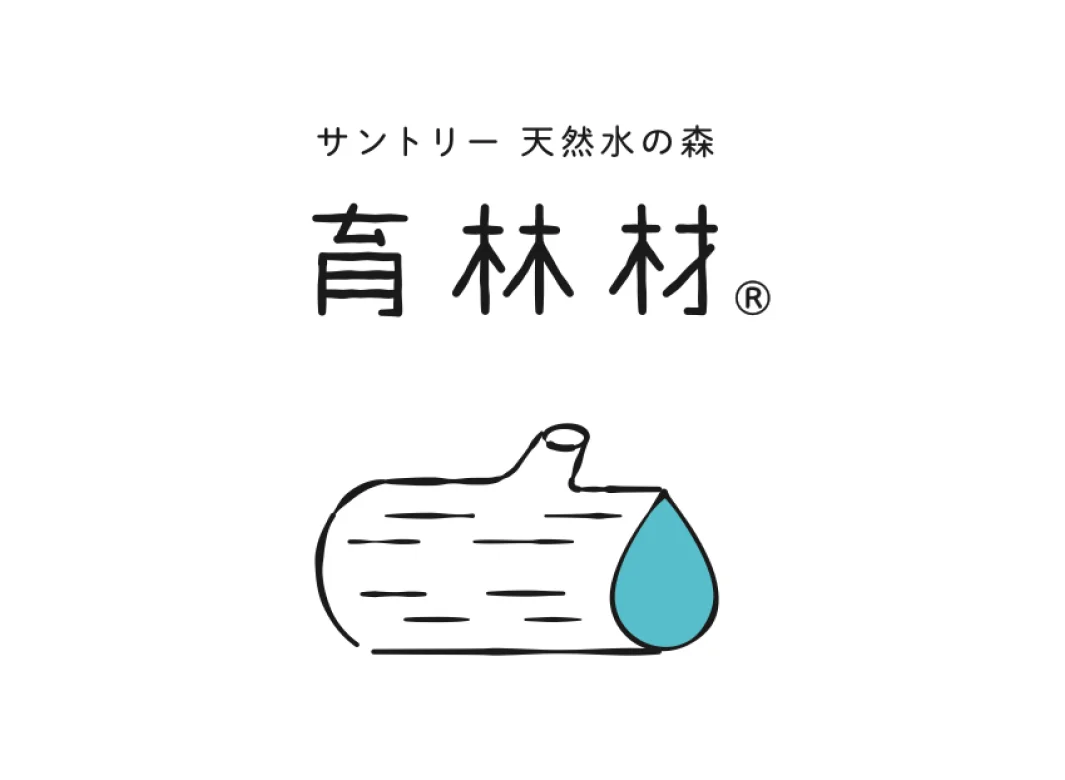
Another Aspect of Ikurinzai We Wish to Nurture
Ikurinzai (which literally means “nurtured forest wood”) refers to the wood produced from trees cut in the process of forest management. However, there is deeper meaning behind the “iku (nurture)” part of “Ikurinzai.” That is, we hope that the utilization of Ikurinzai will help nurture mechanisms that support the ongoing efforts of those involved in our Natural Water Sanctuary activities.
For example, Ikurinzai could serve as a new foundation for preserving traditional woodworking techniques that are at risk of being lost. Through such initiatives, we aim to create new possibilities for the future.
Examples of Ikurinzai Utilization
Together with artisans and manufacturers in various fields, we are finding ways to make effective use of Ikurinzai.
Ikurinzai cafés
In September 2020, the Café & Bar PRONTO opened across from Tamachi Station in Tokyo. All the tabletops inside the café, including the bar counter and large communal tables, were made using Ikurinzai harvested from our Natural Water Sanctuary Kyoto Minami-Yamashiro.
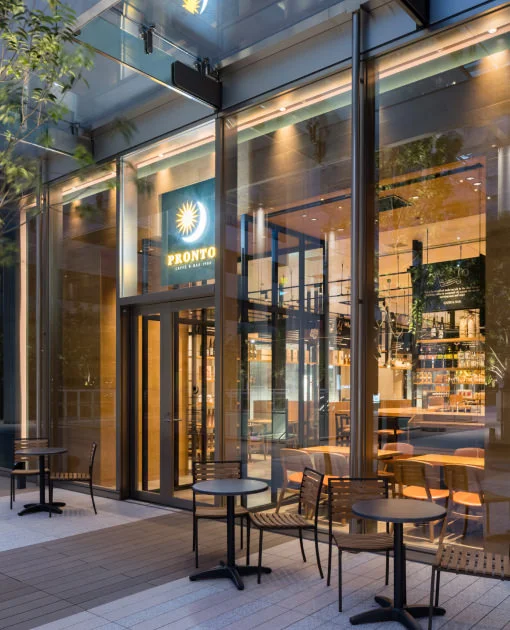
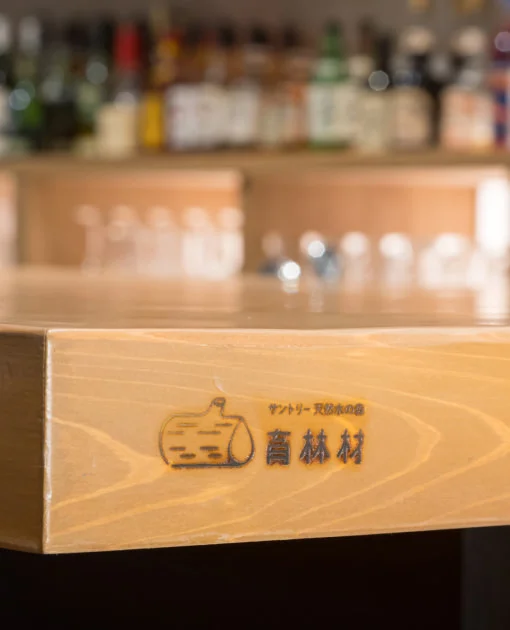
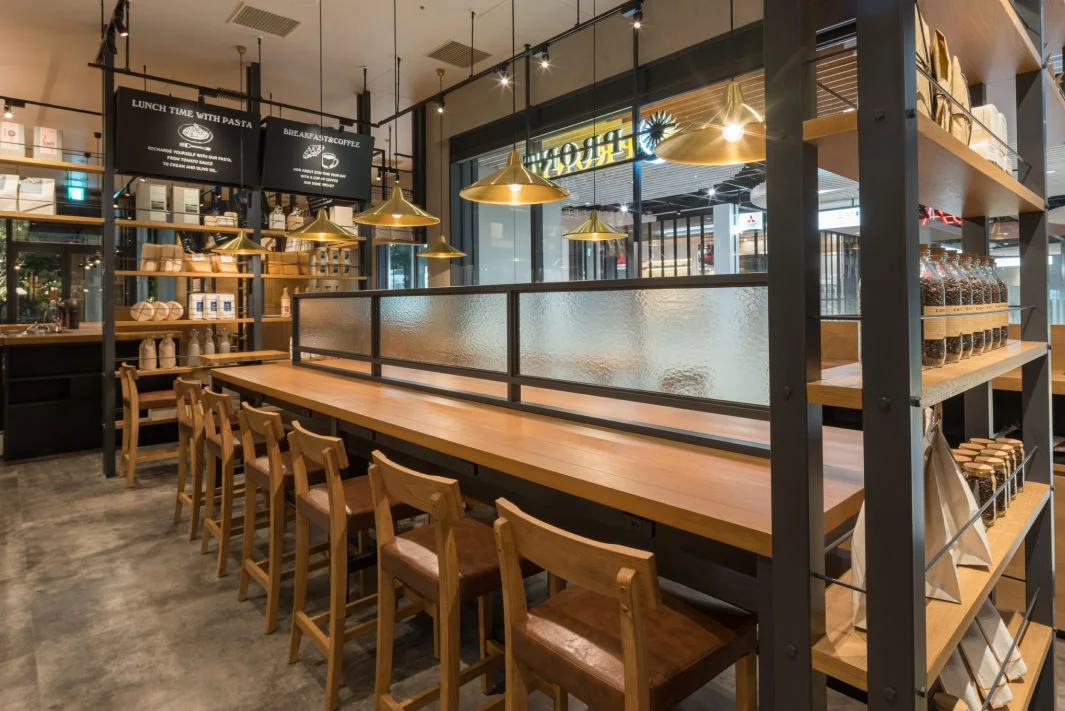
Ikurinzai schools
Located on the Tokyo University of Agriculture’s Setagaya Campus, the Nodai Science Port is one of the largest educational and research facilities within Tokyo’s 23 wards. The entrance ceiling panels, decorative materials for the space-defining booths, and flooring for the grand staircase all feature Ikurinzai (cedar) harvested as part of forest management activities under our Natural Water Sanctuary Project Okutama with Tokyo Univ. of Agriculture.
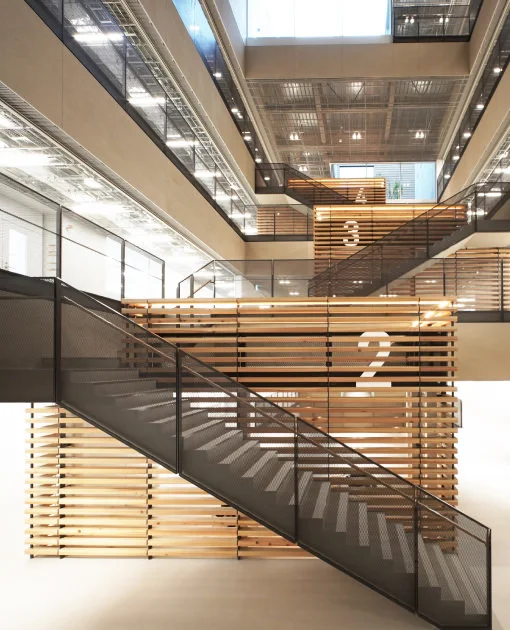
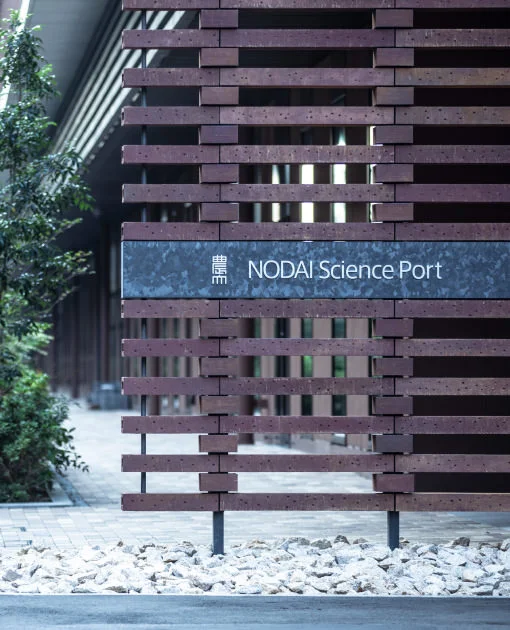
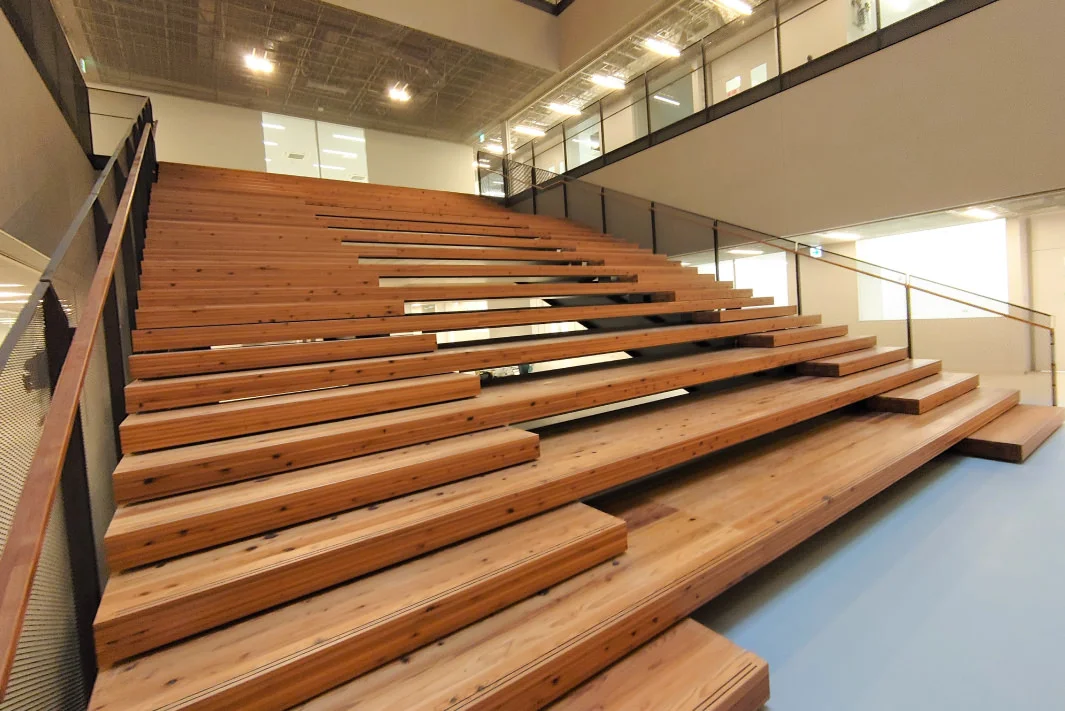
Ikurinzai tableware
Ikurinzai has also been transformed into tableware.
Kanazashi Woodcraft & Natural Water Sanctuary Collaboration
Ikurinzai is being used in a new form of Japanese solid wood parquetry (muku yosegi zaiku) crafted by master artisan Katsuhiro Kanazashi, who pioneered this technique.
In traditional parquetry, different-colored woods are combined into composite blocks, which are then shaved with a plane to create decorative veneers. However, in solid parquetry, the entire block is carved directly into a finished piece, allowing the natural diversity of the forest’s trees to be showcased in a single work.
Ikurinzai Tableware (Ikurinzai Story ④: Assembling and Carving – The World of Renowned Woodworker Katsuhiro Kanazashi –) (Japanese Only)
La Luz Inc. & Natural Water Sanctuary Collaboration
Ikurinzai has been transformed into tumblers by La Luz, a woodworking company based in Odawara, Kanagawa Prefecture.
The Ikurinzai used in this project was harvested during the construction of logging roads for our Natural Water Sanctuary Project Chichibu with the Univ. of Tokyo, a collaborative research initiative between the University and Suntory.
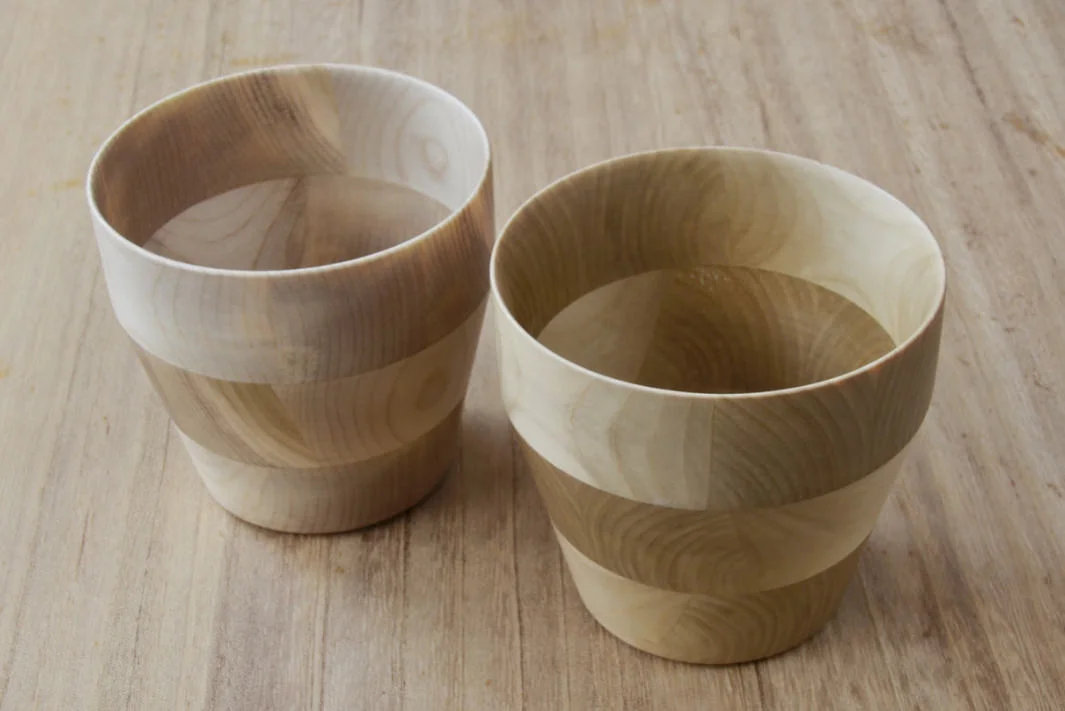
Ikurinzai Story ②: Bringing Feelings Together, Bringing Wood into Form (Japanese only)
Ikurinzai furniture
Even trees that have fallen during typhoons can be reborn as furniture in the hands of Japan’s top furniture artisans.
In 2018, while the major Japanese furniture brand Karimoku Furniture and our Natural Water Sanctuaries were in discussions about collaborating on furniture made from Ikurinzai, a typhoon struck the Kansai region. Our Natural Water Sanctuary Tennozan suffered significant damage, with giant red bayberry, wild cherry, and red pine trees uprooted.
After the storm had passed, Vice President Kato of Karimoku Furniture personally climbed Mount Tennozan along with Suntory employees to carefully select the fallen timber to be used for furniture.
Vice President Kato said about Ikurinzai:
“Some pieces of Ikurinzai may appear full of flaws from a typical furniture maker’s perspective—they might be warped or have blemishes.
But seen from a different perspective, these marks tell the story of a tree’s history—its perseverance despite harsh winds and snow. The irregular grain patterns convey a warmth and unique charm. Seeing each tree’s distinct character, I felt a strong desire to embrace and fully utilize these unique qualities.”
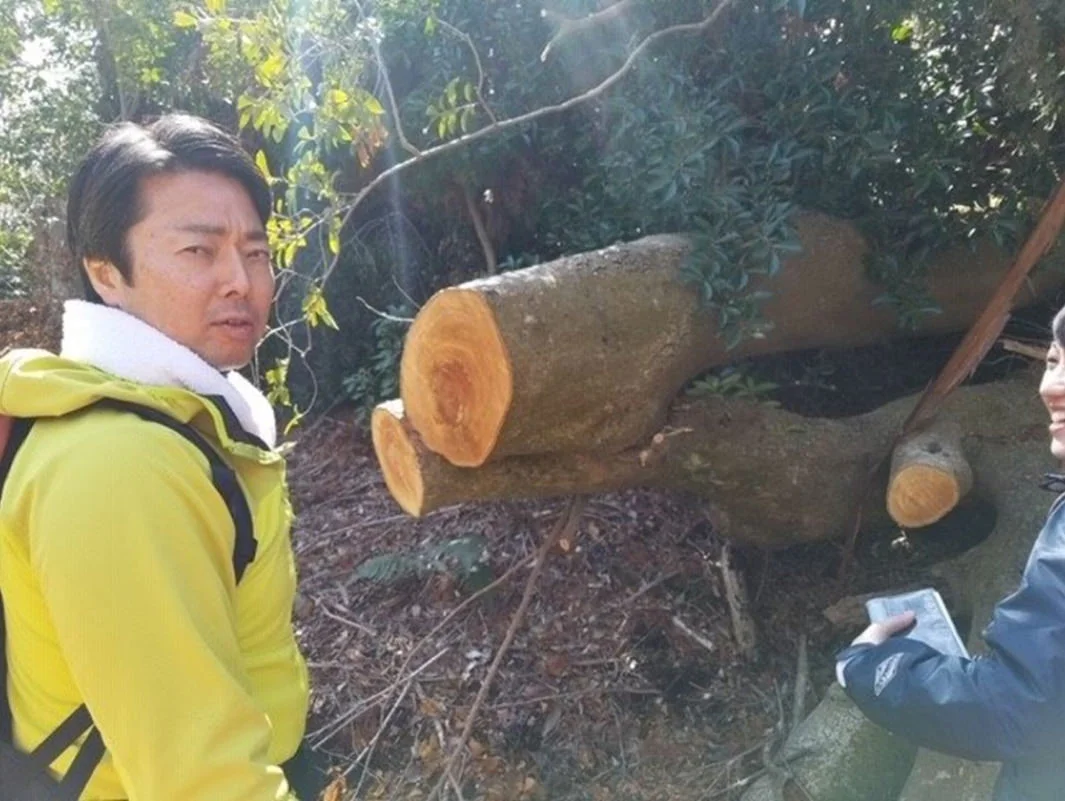
Ikurinzai Furniture (Ikurinzai Story ⑤: After Harvesting, a Second Life — Red Bayberry and Karimoku Furniture ―) (Japanese Only)
The Ikurinzai red bayberry wood taken from our Natural Water Sanctuary was crafted into a beautiful table by the artisans at Karimoku Furniture.
This table is currently placed in the lobby of the Suntory World Headquarters, in Minato-ku, Tokyo.
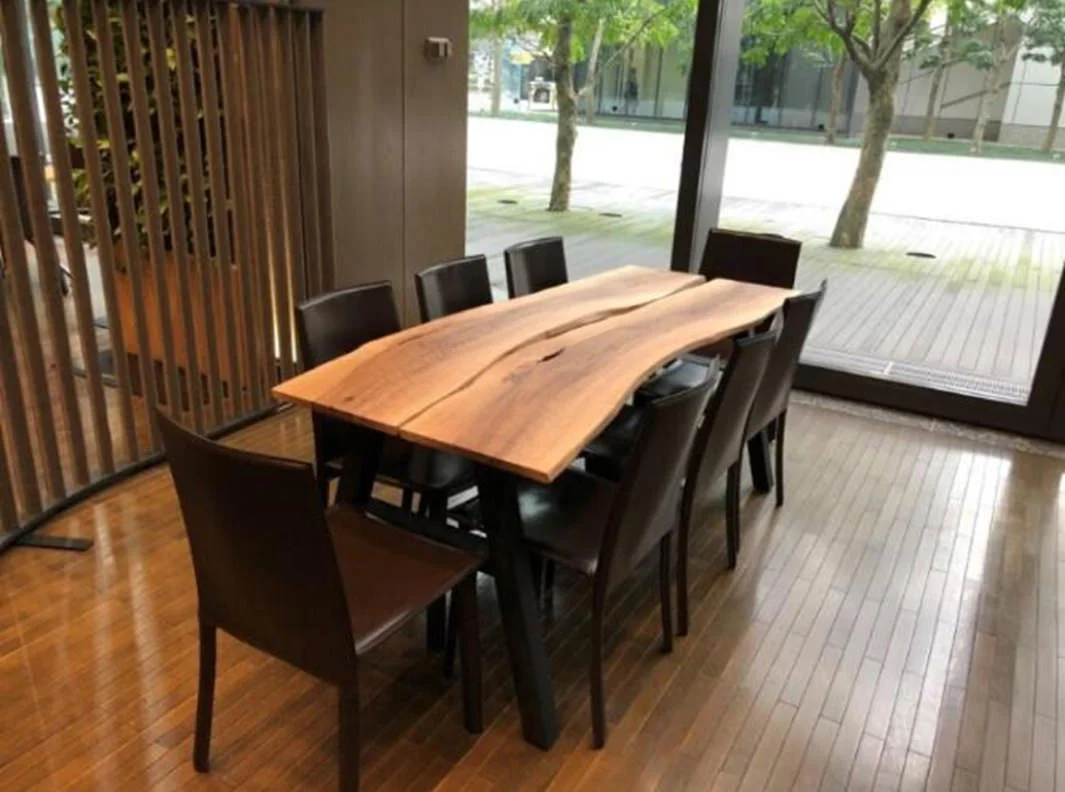
Ikurinzai homes
In October 2020, a house built using Ikurinzai from our Natural Water Sanctuary Ohmi was completed in Shiga Prefecture. While many homes have incorporated Ikurinzai before, this is the first confirmed house where Ikurinzai was used for all posts except the main structural posts and intermediate studs.
As part of its local production and consumption initiative, Shiga Prefecture supports the construction of homes using locally sourced wood. This house was built as an extension of that initiative. The homeowner, Mr. Takai, a traditional Japanese temple carpenter, built this house with his own hands. The project was made possible through the cooperation of Matsui Workshop, Shiratani Sawmill, Watamuki Production Forestry Cooperative, and the Forest Technology Department of Sumitomo Forestry Co., Ltd.
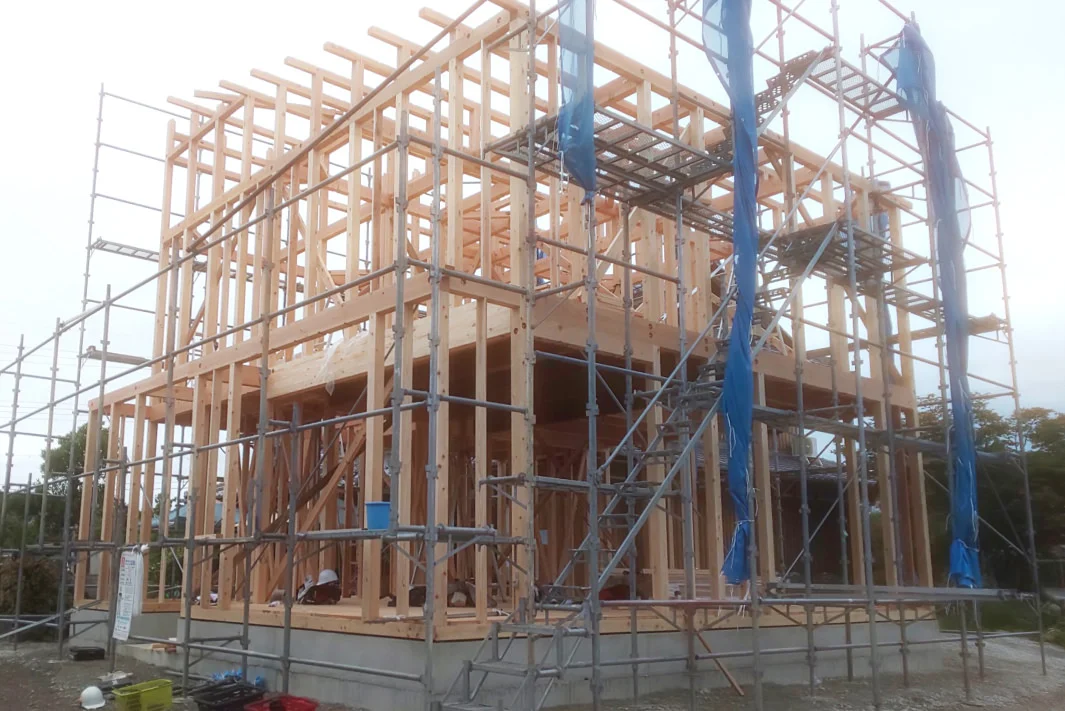
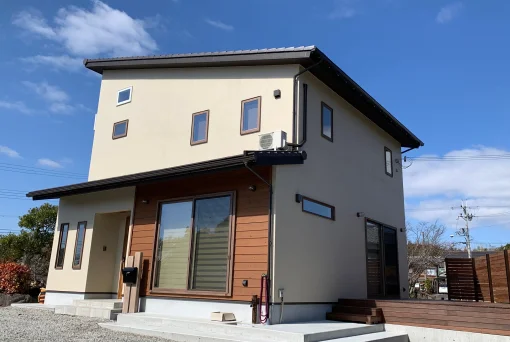
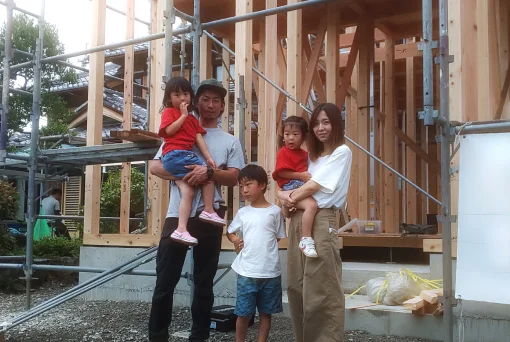
Ikurinzai - Timber from Cultivated Forests Project
Learn about our activities related to implementation
Research Conducted with Experts
By combining field investigations with simulations, we ascertain the current health of the forest and forecast its future.
Planning Based on Forest Surveys
Vision Development
In our Natural Water Sanctuaries, conservation and restoration efforts are taken with a long-term perspective spanning 30 to 100 years. The foundation of this effort is the development of a vision.
Since forest conditions vary significantly from one location to another, thorough surveys are conducted to examine both past developments and the current situations. The surveys involve a wide range of tools and information, including topographic maps, aerial photographs, existing vegetation classifications, and the characteristics of individual plant communities*.
Based on the survey results, discussions are held with vegetation consultants, forestry experts, and other specialists to identify issues for each plant community. Subsequently, multiple solutions are proposed for each identified issue, and maintenance policies are determined accordingly. By updating each vision every 5 to 10 years, the Sanctuaries undergo continuous evaluation and improvement.
A community is a group of plants that inhabit the same location.
Experts involved in this Initiative

Regional Environmental Planning, Inc.

Institute of Rural and Urban Ecology Co., Ltd.

MORISHO LLC

AI-Shokubutsu Landscape Planning Office
Implementation of Forest Management Plans
We carry out restoration and maintenance activities in collaboration with professionals from various fields.
Improvement Through Ongoing Surveys
The plants and animals living in forests are constantly changing. In our Natural Water Sanctuaries, ongoing surveys are conducted to inform continuous improvements.
Examples of Our Activities
When working with nature, things don't always go as planned. That's why ongoing surveys after forest maintenance are crucial. Sometimes, results exceed expectations, while other times, efforts end in complete failure. Here are some examples of challenges and discoveries encountered during our activities.
These Deer Weren't Here Last Year
In our Natural Water Sanctuary Okudaisen, 2 to 3 meters of snow accumulates during winter. Because of this, deer had never been seen in the area until recently. However, signs of deer feeding on grass and shrubs started to appear. In response, cameras were immediately set up, revealing a significant presence of deer.
The original maintenance plan for our Natural Water Sanctuary Okudaisen was designed for a forest without deer. Until recently, this sanctuary stood out as an exceptional example where biodiversity thrived and maintenance results were highly effective.
Unfortunately, the unexpected arrival of deer meant the plan had to be completely revised. The first step was to fence off key areas. However, standard metal fences would be damaged as melting snowpacks move during the spring thaw. To address this, we are taking an emergency measure of installing a resin net immediately after the snow begins to melt, and then laying the net flat on the ground when the snow starts to accumulate.
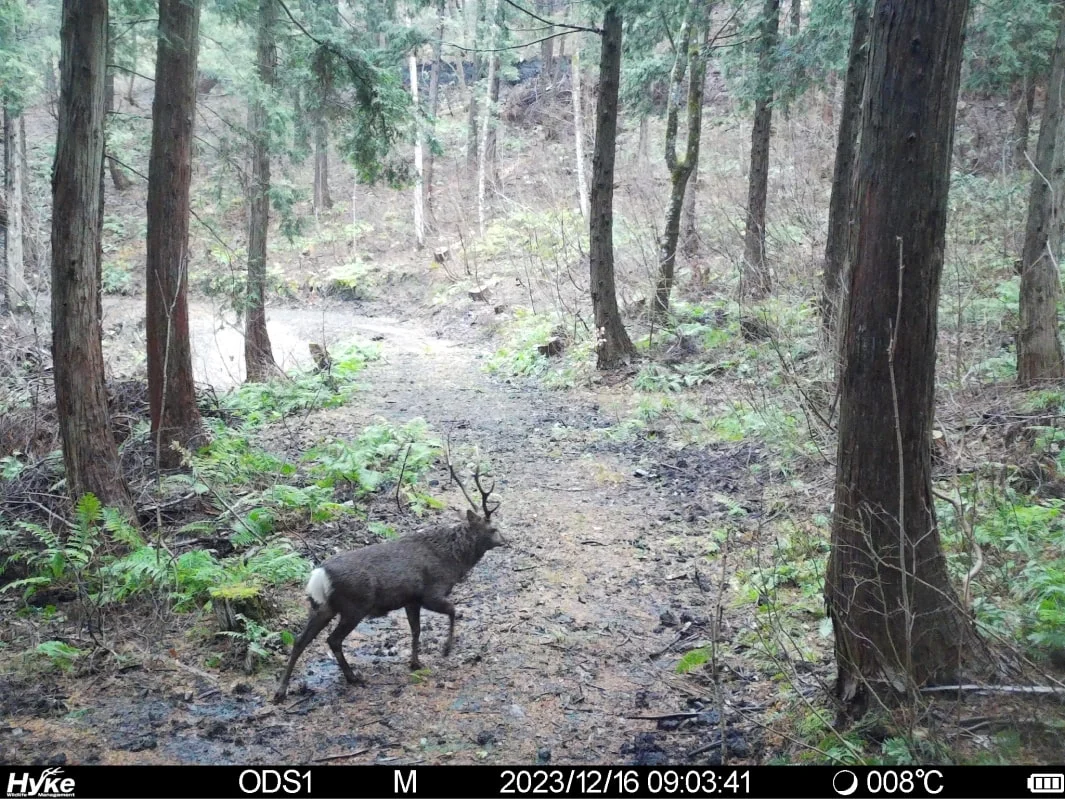
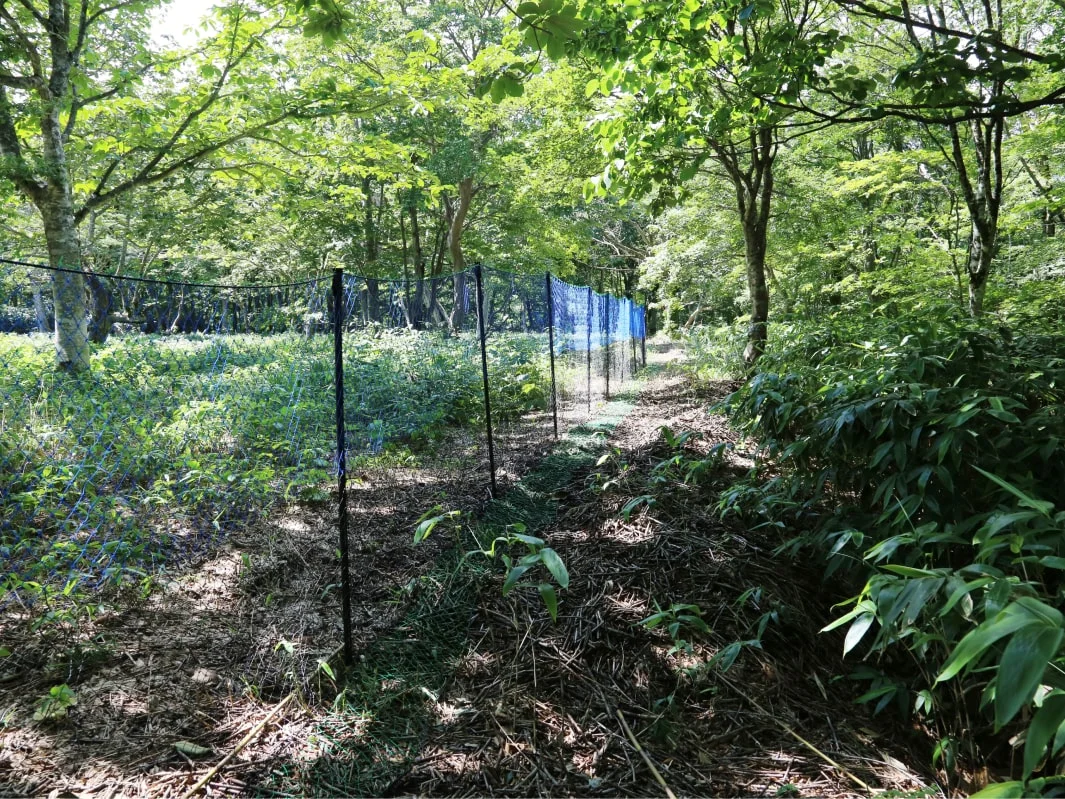
A Mountain Made of Pumice?
When the agreement was signed to create our Natural Water Sanctuary Shizuoka Oyama, the most surprising aspect of the forest management challenge was the fragility of the mountainside. The majority of the existing logging roads had been severely eroded by heavy rains, leaving deep trenches throughout.
In fact, this mountain is composed of alternating layers of volcanic ash from past eruptions of Mount Fuji and small pumice stones called scoria. When roads or other clear-cuts expose the ground, the pumice layer is quickly eroded by water.
As a result, we decided to turn unnecessary logging roads back into forest. Unfortunately, these areas are also frequented by many deer. So, on the flat roadbeds we planted mitsumata (Oriental paperbush) and susuki (Japanese silver grass), which are less palatable to deer. Although susuki is generally disliked by deer, for some reason they like to pull out the young plants. So, we are covering them with agricultural bird netting until they are well-established. The broadleaf trees planted on one side are being protected as individual trees.
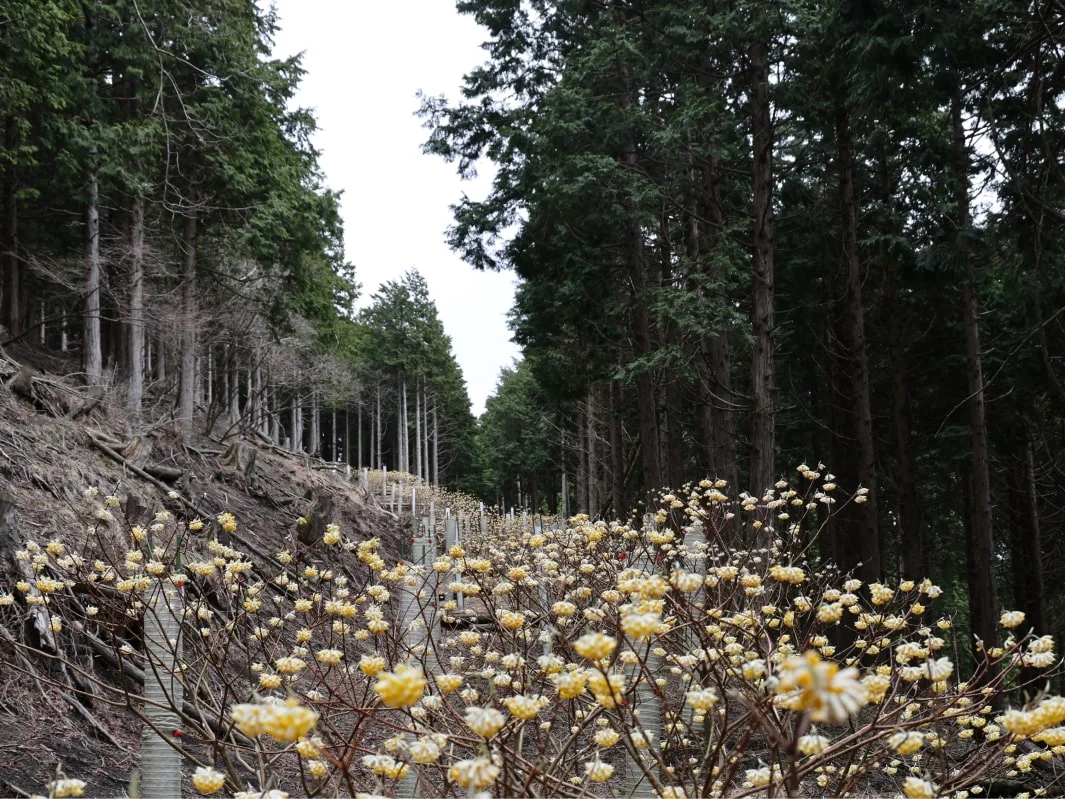
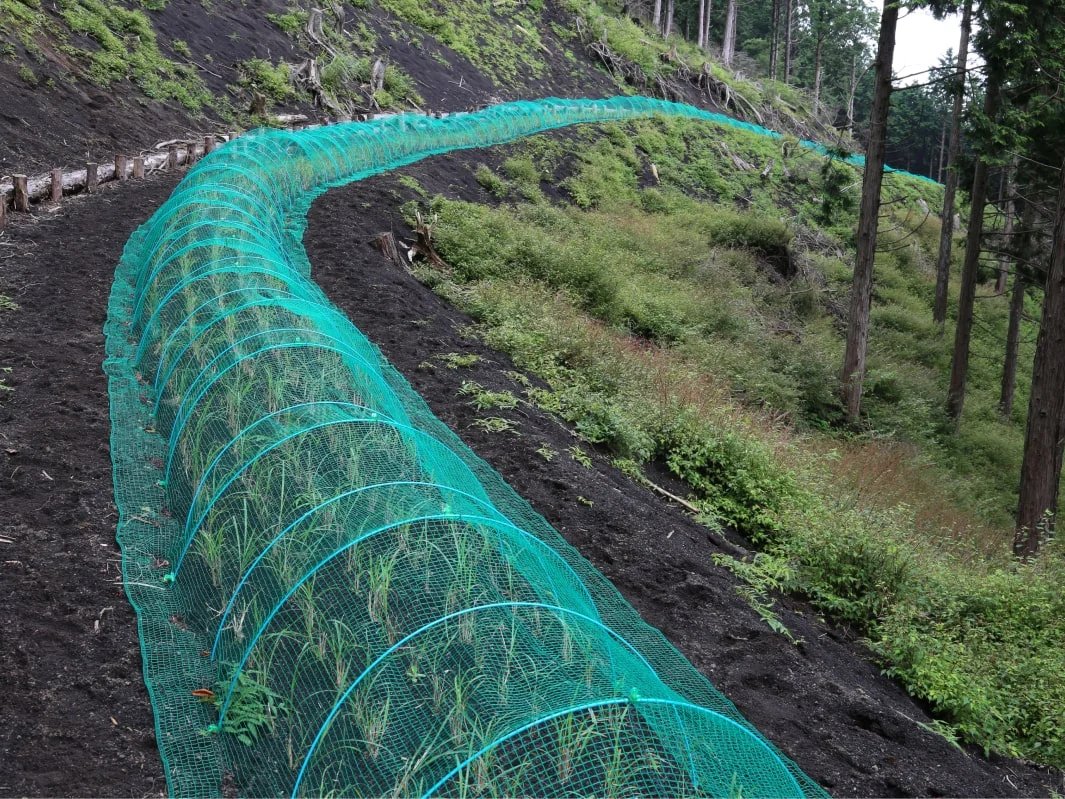
New Discoveries During Forest Management
As we continue to repeat our process of R-PDCA (research, plan, do, check, and act), we sometimes make unexpected discoveries. Here are some of the surprising discoveries we have made about wildlife during our forest management activities.
Deer Feeding Almost Exclusively on Fallen Leaves During Winter!
As part of our Natural Water Sanctuary Project Chichibu with the Univ. of Tokyo, we conducted DNA analysis of deer droppings to investigate what they eat in different seasons. The results were astonishing.
During winter, the primary food source for deer turned out to be maples and dogwoods. However, both of these tree types are deciduous. This means in winter, there are no green leaves available to eat. Later, using footage from fixed-point cameras we confirmed that deer herds are feeding on fallen leaves. As you can see, the deer were in good condition and showed no signs of malnutrition.
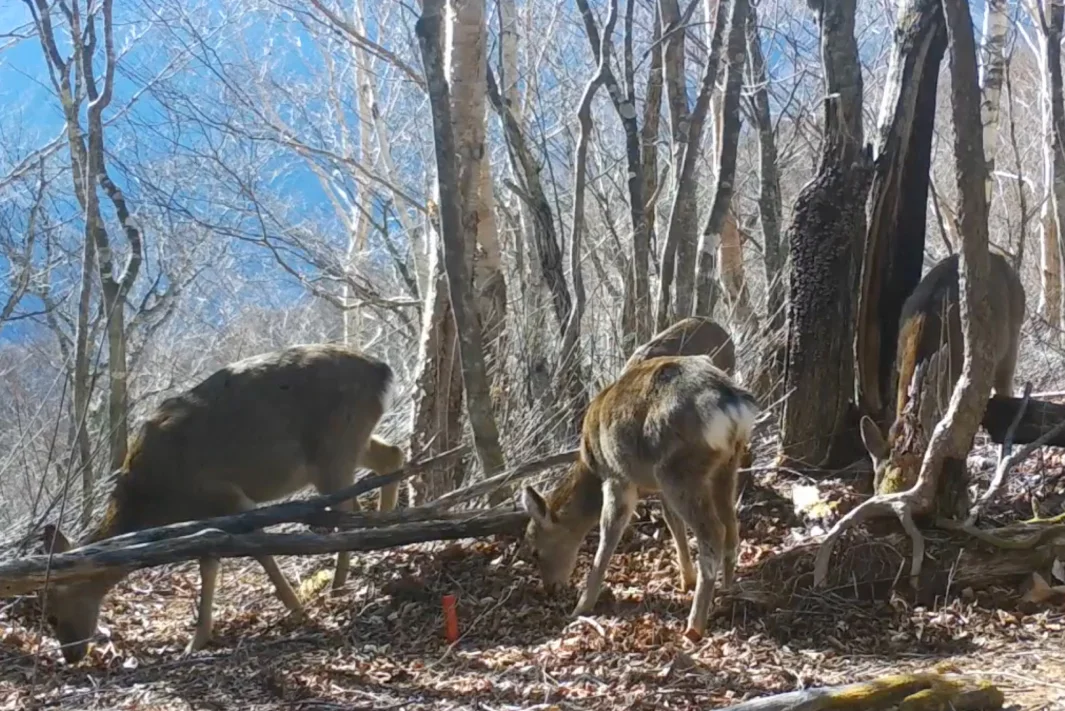
If deer can survive on fallen leaves, then their food resources are virtually limitless. This discovery invalidates the once-optimistic assumption that if deer eat up all the undergrowth, they will eventually starve and their numbers will decline. We are now developing new strategies to protect forest biodiversity.
Experts involved in this Initiative

Hirao Toshihide
Lecturer, The University of Tokyo
A Possible Solution for Invasive Bamboo?
In our Natural Water Sanctuary Tennozan, a logging road was built alongside a bamboo grove. To protect the road’s embankments (norimen*1), we planted mitsumata (Oriental paperbush) —a species that deer do not eat.
Then, something unexpected happened. Along the sides of the road where mitsumata was densely planted, bamboo shoots stopped sprouting. It appears that mitsumata has an allelopathic effect*2 that inhibits bamboo roots. If this proves correct, it could be a breakthrough solution for controlling invasive bamboo across Japan.
- Norimen refers to the slopes created on both sides of a logging road.
- Allelopathy is the phenomenon where chemicals released by one plant influence the growth of other plants or microorganisms.
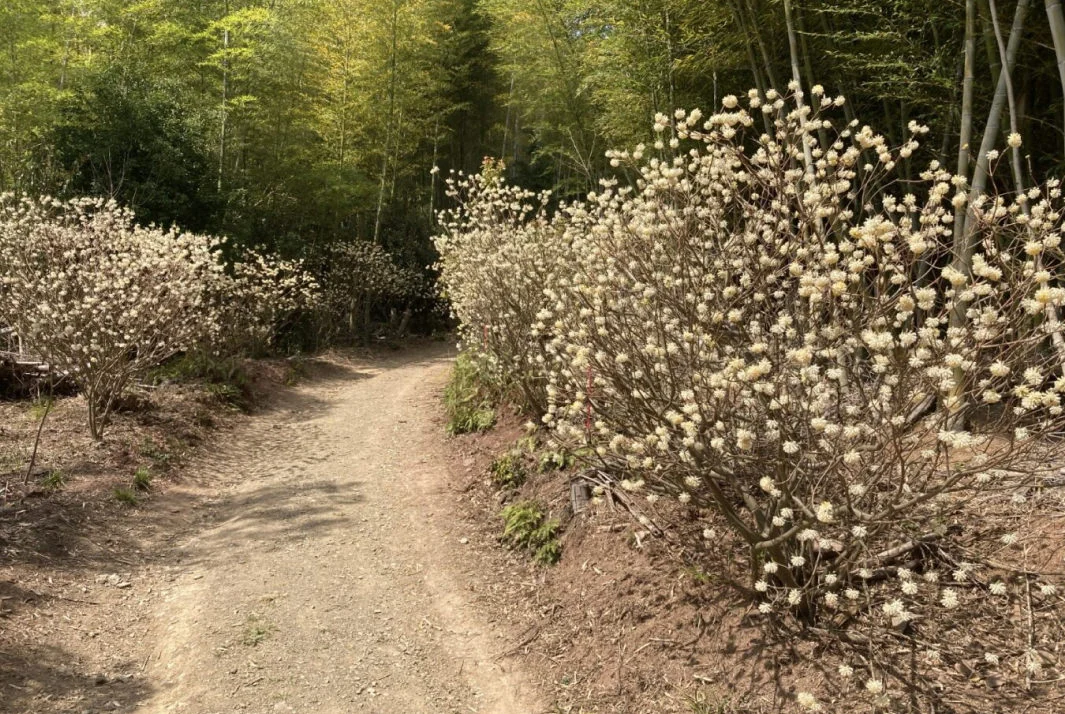


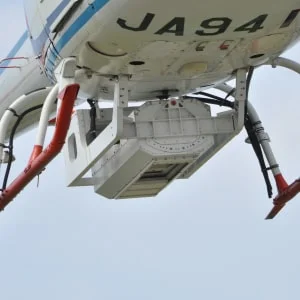
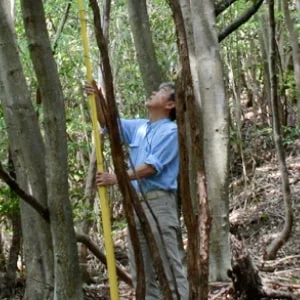
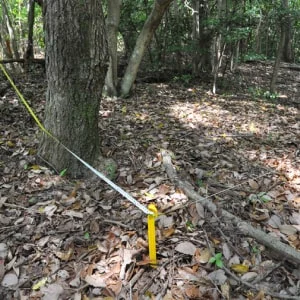
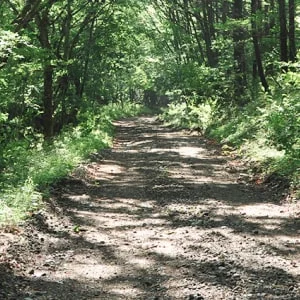
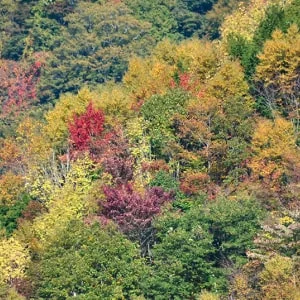
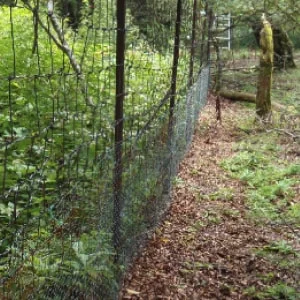
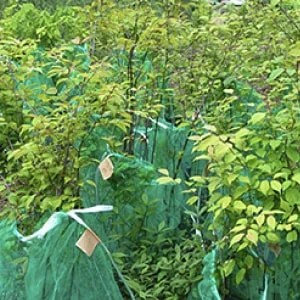
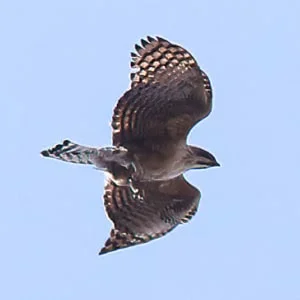
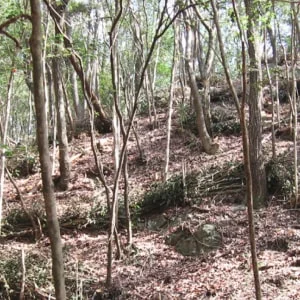
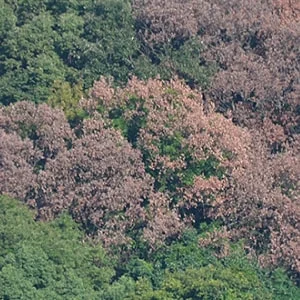
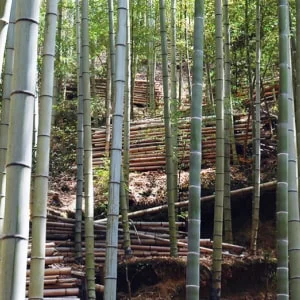
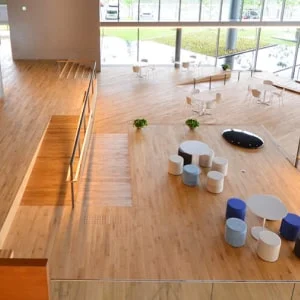
 Home
Home Initiative Policy and Structure
Initiative Policy and Structure Living Things in the Natural Water Sanctuaries
Living Things in the Natural Water Sanctuaries Dedication to Water
Dedication to Water Natural Water Sanctuaries
Natural Water Sanctuaries  Natural Water
Natural Water  Initiative History
Initiative History